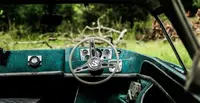Webly Supervised Joint Embedding for Cross-Modal Image-Text Retrieval
A study conducted in the UK from 2009 to 2010 by leading scientists explored neonatal resuscitation practices in various neonatal units, aiming to assess adherence to international guidelines and identify differences between tertiary and non-tertiary care providers...
Read on arXiv Lorem ipsum dolor sit amet, consectetur adipiscing elit. Sed do eiusmod tempor incididunt ut labore et dolore magna aliqua. Ut enim ad minim veniam, quis nostrud exercitation ullamco laboris nisi ut aliquip ex ea commodo consequat.
Lorem ipsum dolor sit amet, consectetur adipiscing elit. Sed do eiusmod tempor incididunt ut labore et dolore magna aliqua. Ut enim ad minim veniam, quis nostrud exercitation ullamco laboris nisi ut aliquip ex ea commodo consequat.
One Sentence Abstract
This abstract discusses a new method that uses web images and tags alongside fully annotated datasets to train a deep neural network for cross-modal retrieval between visual data and natural language, achieving significant performance gains over state-of-the-art approaches.
Simplified Abstract
Researchers are working on improving how computers can connect images and words – a tricky task in the world of multimedia. Previous methods had limitations because they learned from a small number of images with exact word descriptions, which could make the results unreliable. To solve this, the researchers looked at a creative way to use the internet, where there are lots of images, but the descriptions can be messy. They discovered a two-step process to teach computers to better understand the connections between images and words.
The new method is better than earlier ones, as shown in experiments using two standard tests. This advancement is important because it helps computers understand connections between countries working together on science projects by "reading" the images and words they share. By making this process more accurate and reliable, the researchers hope to improve our understanding of how countries collaborate in the field of science.
Study Fields
Main fields:
- Multimedia retrieval
- Deep learning
- Webly supervised learning
Subfields:
- Cross-modal retrieval between visual data and natural language description
- Image-text retrieval
- Deep representations aligned across modalities
- Small-scale datasets
- Annotating millions of images with sentences
- Bias in model training
- Web images with noisy annotations
- Joint representation learning
- Visual-semantic joint embedding
- Two-stage approach for image-text retrieval
- Supervised pair-wise ranking loss
- Performance gain in image-text retrieval
Study Objectives
- To address the challenge of cross-modal retrieval between visual data and natural language description in multimedia
- To investigate the possibility of using web images with noisy annotations for learning robust image-text joint representation
- To propose a two-stage approach for the task that can augment a typical supervised pair-wise ranking loss-based formulation with weakly-annotated web images to learn a more robust visual-semantic embedding
- To evaluate the performance of the proposed method on two standard benchmark datasets and compare it with state-of-the-art approaches
Conclusions
- The article addresses the challenge of cross-modal retrieval between visual data and natural language descriptions in multimedia.
- It highlights that recent image-text retrieval methods face issues such as limited coverage and high costs for larger datasets.
- The authors propose a solution inspired by webly supervised learning, leveraging readily-available web images and corresponding tags along with fully annotated datasets for learning robust image-text joint representation.
- The proposed approach uses a two-stage method that augments a typical supervised pair-wise ranking loss-based formulation with weakly annotated web images for better visual-semantic embedding.
- Experiments on two standard benchmark datasets show significant performance gains in image-text retrieval compared to state-of-the-art approaches.
References
- University of AI
Received 20 Oct 2011, Revised 9 Dec 2011, Accepted 5 Jan 2012, Available online 12 Jan 2012.





